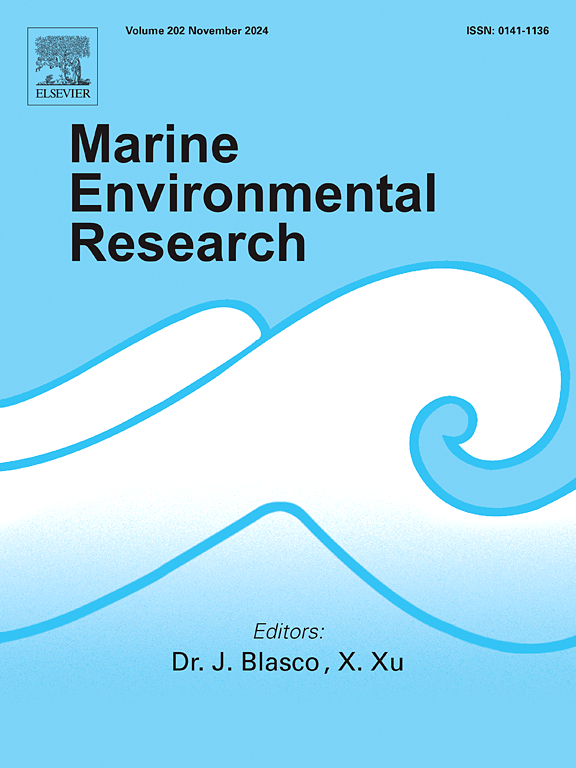Effect of diet changes in benthic ecosystems owing to climate change on the physiological responses of Turbo sazae in waters around Jeju Island, Korea
IF 3
3区 环境科学与生态学
Q2 ENVIRONMENTAL SCIENCES
引用次数: 0
Abstract
The benthic ecosystem in temperate regions is becoming barren owing to the replacement of macroalgae by calcareous algae as a result of climate change-induced increases in water temperature. The aim of this study was to observe how the top shell, Turbo sazae, an invertebrate that feeds on macroalgae, adapts to a benthic environment with a reduced macroalgae population owing to replacement by calcareous algae. Using tank experiments, the top shells were cultured for 18 weeks. Within this period, they were fed a diet comprising either Eclonia cava or Corallina officinalis. Thereafter, hemocyte response, reproductive development, and the levels of biochemical compounds in the individuals under investigation were analyzed. The results obtained showed no significant differences in immunological responses, gonad development, and general body weight between the two feeding groups. However, amino acid profiling showed a decreasing trend in amino acid contents in both feeding groups, but no significant differences were observed with respect to overall protein content. These findings indirectly suggested that even in a macroalgae-depleted environment, the top shells can survive by consuming crustose calcareous algae, but with the change in diet affecting the levels of some amino acids in their bodies. Therefore, this study provides valuable insights into the adaptability of the top shells inhabiting the waters around Jeju Island to changes in their feeding environment and may also serve as basis for enhancing resource management strategies in response to climate change-induced changes in the benthic ecosystem.

求助全文
约1分钟内获得全文
求助全文
来源期刊

Marine environmental research
环境科学-毒理学
CiteScore
5.90
自引率
3.00%
发文量
217
审稿时长
46 days
期刊介绍:
Marine Environmental Research publishes original research papers on chemical, physical, and biological interactions in the oceans and coastal waters. The journal serves as a forum for new information on biology, chemistry, and toxicology and syntheses that advance understanding of marine environmental processes.
Submission of multidisciplinary studies is encouraged. Studies that utilize experimental approaches to clarify the roles of anthropogenic and natural causes of changes in marine ecosystems are especially welcome, as are those studies that represent new developments of a theoretical or conceptual aspect of marine science. All papers published in this journal are reviewed by qualified peers prior to acceptance and publication. Examples of topics considered to be appropriate for the journal include, but are not limited to, the following:
– The extent, persistence, and consequences of change and the recovery from such change in natural marine systems
– The biochemical, physiological, and ecological consequences of contaminants to marine organisms and ecosystems
– The biogeochemistry of naturally occurring and anthropogenic substances
– Models that describe and predict the above processes
– Monitoring studies, to the extent that their results provide new information on functional processes
– Methodological papers describing improved quantitative techniques for the marine sciences.
 求助内容:
求助内容: 应助结果提醒方式:
应助结果提醒方式:


